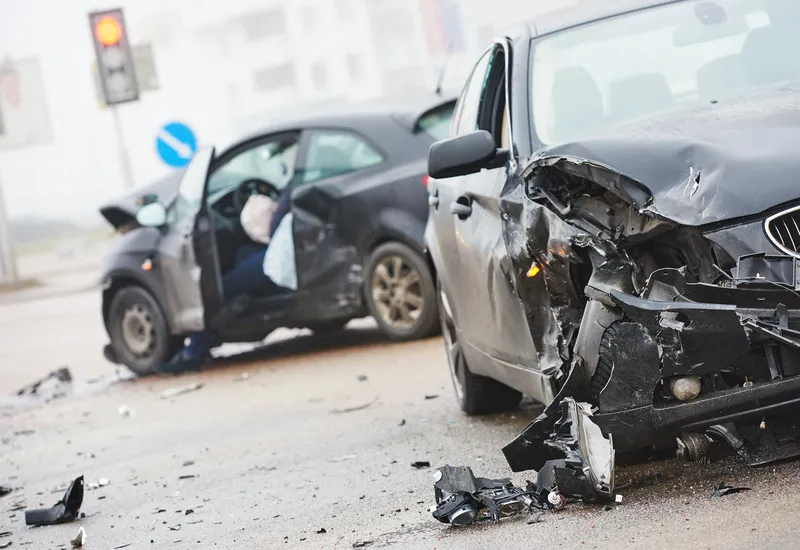TRW is announcing its next generation pedestrian protection system (PPS) - a robust and reliable system using a combination of acceleration and pressure sensing technologies to detect a pedestrian impact. "While the auto industry continues its focus on reducing injuries in single and multiple vehicle crashes and reductions in deaths and injuries have been realised in developed markets, pedestrian fatalities continue to increase globally," said Peter Lake, executive vice president of sales and business devel
July 31, 2012
Read time: 3 mins
RSS601 TRW Automotive is announcing its next generation pedestrian protection system (PPS) - a robust and reliable system using a combination of acceleration and pressure sensing technologies to detect a pedestrian impact.
"While the auto industry continues its focus on reducing injuries in single and multiple vehicle crashes and reductions in deaths and injuries have been realised in developed markets, pedestrian fatalities continue to increase globally," said Peter Lake, executive vice president of sales and business development for TRW. "It is estimated that some 35 per cent of global road fatalities involve pedestrians and other road users outside of a traditional four-wheel vehicle, and enhancing their protection is one of the next great frontiers for both active and passive safety systems.
"In addition, occupant fatality rates are falling faster in many developed markets than pedestrian fatalities, making pedestrians an increasingly larger percentage of overall road deaths and leading to an increasing industry focus on pedestrian protection," Lake added.
TRW's latest PPS uses pressure sensor satellite data measured via flexible tubing that runs the width of a vehicle's front bumper, in conjunction with up to three remote acceleration sensors to detect an impact and identify which side of the vehicle the pedestrian has impacted. TRW claims the system will also help automakers maintain five star EuroNCAP safety ratings in Europe, where pedestrian protection accounts for 20 per cent of a vehicle's overall score.
TRW has been in production with its first generation pedestrian protection systems (PPS) since 2009 for1656 Porsche and has since launched PPS with 1958 Chrysler. These systems comprise remote acceleration sensors and either a dedicated ECU or an airbag ECU which integrates the pedestrian protection system algorithm to detect a pedestrian impact, and hood lifters which can be deployed to increase the gap to the vehicle's engine and help cushion pedestrian impact. The sensors detect an impact and pyrotechnic actuators then raise the rear area of the vehicle's hood to increase pedestrian head protection. This helps to decrease the impact of the most drastic, and most common, cause of pedestrian injury and death.
TRW's second-generation systems work in a similar fashion but add additional sensing capabilities to improve system performance and robustness. The company anticipates the new system will be ready for production by 2016.
"While the auto industry continues its focus on reducing injuries in single and multiple vehicle crashes and reductions in deaths and injuries have been realised in developed markets, pedestrian fatalities continue to increase globally," said Peter Lake, executive vice president of sales and business development for TRW. "It is estimated that some 35 per cent of global road fatalities involve pedestrians and other road users outside of a traditional four-wheel vehicle, and enhancing their protection is one of the next great frontiers for both active and passive safety systems.
"In addition, occupant fatality rates are falling faster in many developed markets than pedestrian fatalities, making pedestrians an increasingly larger percentage of overall road deaths and leading to an increasing industry focus on pedestrian protection," Lake added.
TRW's latest PPS uses pressure sensor satellite data measured via flexible tubing that runs the width of a vehicle's front bumper, in conjunction with up to three remote acceleration sensors to detect an impact and identify which side of the vehicle the pedestrian has impacted. TRW claims the system will also help automakers maintain five star EuroNCAP safety ratings in Europe, where pedestrian protection accounts for 20 per cent of a vehicle's overall score.
TRW has been in production with its first generation pedestrian protection systems (PPS) since 2009 for
TRW's second-generation systems work in a similar fashion but add additional sensing capabilities to improve system performance and robustness. The company anticipates the new system will be ready for production by 2016.









